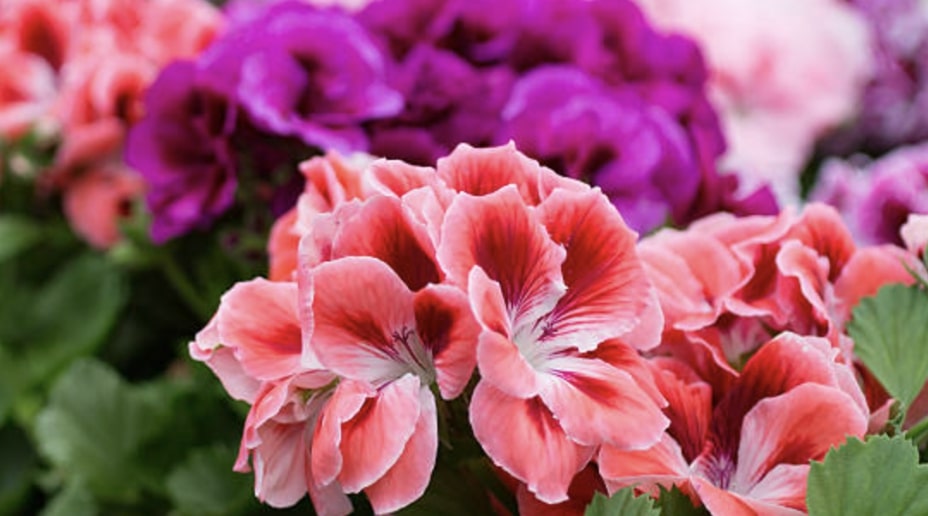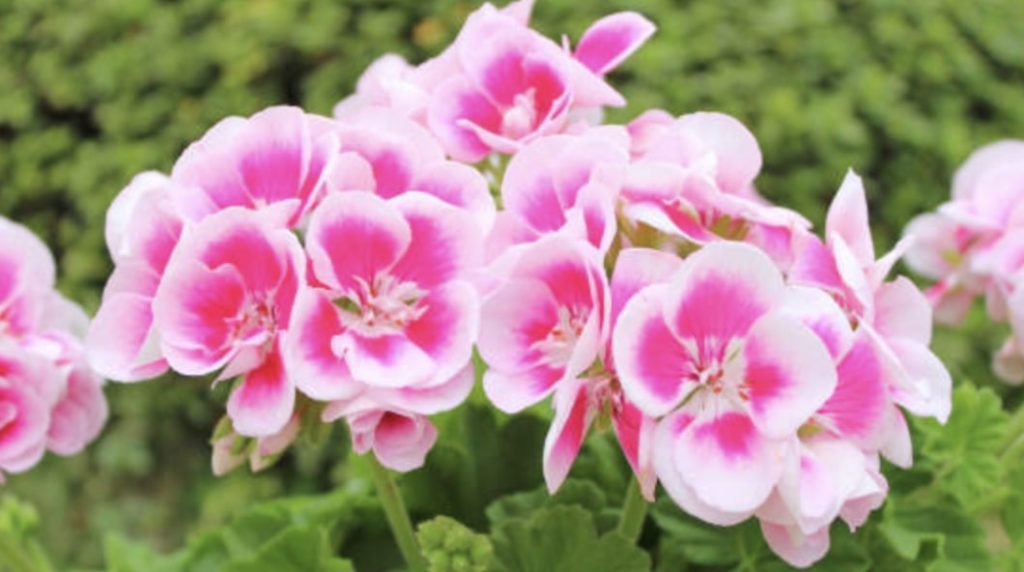You’ve certainly made the right pick with geraniums. That’s because they can adapt to both indoor and outdoor locations as long as they get ample light.
They are present in charming colors, including red, white, pink, and purple. Best of all, they smell nice and can brighten your home and garden.
Anyway, taking care of these plants is fairly easy, though you have to meet their specific needs. And here is our guide on how you can do that!
Growing Geranium Plants

The needs will be slightly different for geraniums based on where you plan to grow them. You can plant them in a garden bedding outside, potted containers, or hanging baskets either indoors or outdoors.
Generally, these flowers seek areas with plenty of moderate sunlight. It’s natural that inside the house they would get less sun exposure than if planted outside.
In addition, potted geraniums require a temperature of 65℉ to 70℉ during the day and 55℉ at night. If the climate is not ideal for them, move them to a better spot.
Now, the soil requirements of indoor and outdoor plants are the same. It should be moist and well-draining, and the potting soil should have a balanced amount of soil, perlite, and peat.
The last thing they need is heavy kinds of soil like clay, for one, because this will block the water from hydrating the plant.
Spacing the plants is important too to let air circulate in-between them. This also avoids moisture damage and pest infestation, which will greatly inhibit their growth.
Lastly, put mulch on the top layer of the soil to prevent your geraniums from drying up and invasive weed growth.
Caring Tips for Geraniums

Aim to water your indoor or outdoor geraniums once a week. Do it deeply in order to wet the root ball and the nearby soil but not too much.
Also, note that you may have to water your plants a bit more during dry spells, especially potted ones.
Fertilizer is also a necessity with these plants. Use a water-soluble fertilizer for easy absorption and one with a nutrient count of 5-10-5 coupled with organic matter every four to six weeks.
Furthermore, trim off the wilted and dry blossoms and leaves to allow new flowers to sprout and keep them neat-looking.
In the instance that the plants are overgrowing, which is indicated by some strange wilting between waterings, you might want to re-pot them.
So follow these care tips as well as our advice prior to this section to avoid houseplant pests, such as spider mites, whiteflies, and mealybugs.




